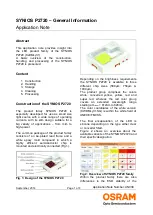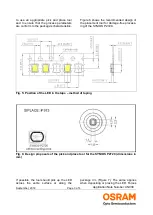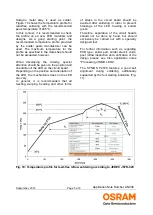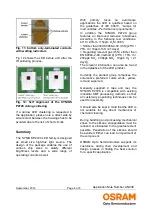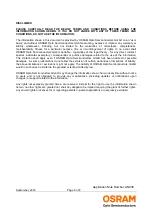
September, 2014
Page 5 of 8
SnAgCu metal alloy is used as solder.
Figure 10 shows the temperature profile for
lead-free soldering with the recommended
peak temperature of 245°C.
In this context, it is recommended to check
the profile on all new PCB materials and
designs. As a good starting point, the
recommended temperature profile provided
by the solder paste manufacturer can be
used. The maximum temperature for the
profile as specified in the data sheet should
not be exceeded, however.
When developing the circuitry, special
attention should be given to the position and
orientation of the LED on the circuit board.
Depending on the position and orientation of
the LED, the mechanical stress on the LED
can vary.
In general, it is recommended that all
twisting, warping, bending and other forms
of stress to the circuit board should be
avoided after soldering in order to prevent
breakage of the LED housing or solder
joints.
Therefore, separation of the circuit boards
should not be done by hand, but should
exclusively be carried out with a specially
designed tool.
For further information such as regarding
PCB type, solder pad, solder stencil, voids,
post reflow inspection and verification of the
design please see also application notes
“Processing of SMD LEDs”
.
The SYNIOS P2720 features a good self
alignment during soldering additionally
supported by the four wetting indicators (Fig.
11).
Fig. 10: Temperature profile for lead-free reflow soldering according to JEDEC JSTD-020
Application Note Number: AN038

